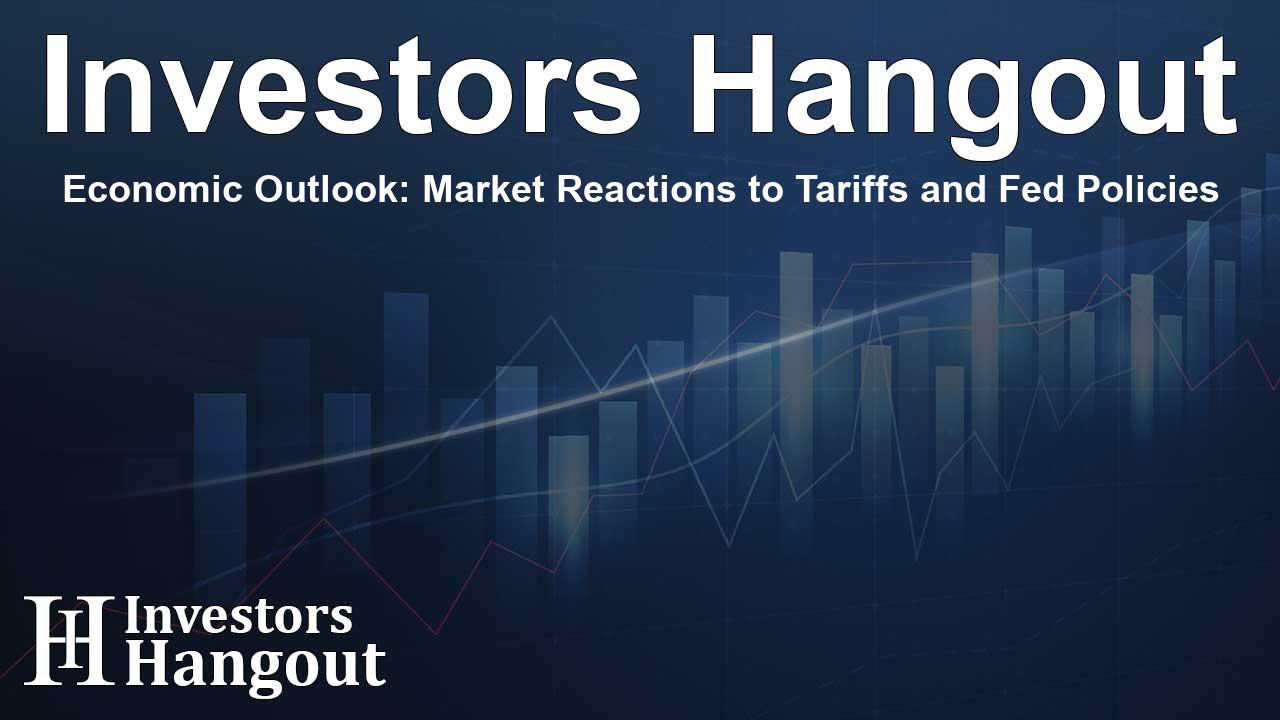Economic Outlook: Market Reactions to Tariffs and Fed Policies

Understanding the Market Impact of Economic Events
This week presents a unique collection of economic data, poised to create ripples in the financial landscape. Though it seems less eventful compared to the last week, the developments in U.S. economic data remain critical. Market observers should pay close attention to these releases, especially with the backdrop of President Trump's ongoing dialogue surrounding Federal Reserve Chair Jerome Powell.
Last week, data depicted a sluggish employment report, prompting President Trump to voice his discontent with the Fed's policies. Trump's social media comments highlighted his demand for decisive actions from the Federal Reserve, suggesting a growing impatience with current monetary policies.
Amidst this unrest, the resignation of Fed Governor Adriana Kugler adds another layer of complexity. This departure opens the door for Trump to appoint another loyalist, which could shift the dynamics within the Federal Reserve board significantly. As financial markets await more insights, Fed officials, including Governor Lisa Cook, are scheduled to share their thoughts throughout the week, stirring further anticipation.
Key Economic Releases to Watch
1. Jobless Claims
The jobless claims report, expected this Thursday, will be particularly noteworthy amidst Trump's insistence on lower unemployment rates. Analysts anticipate that jobless claims will hover around 225,000, signaling that despite the pressures from recent tariffs, layoffs have remained relatively stable. This consistent trend could offer some reassurance to market participants wary of rising unemployment rates.
2. PMI Data
Another potential highlight this week is the Purchasing Managers' Index (PMI) data. Particularly, the Non-Manufacturing PMI, scheduled for release, is viewed as a barometer of economic health in the service sector. Recent challenges in manufacturing—attributed to trade tensions—have caused volatility, and any signs of stabilization in the services sector could provide much-needed optimism.
3. Productivity and Costs
Turning our focus to productivity, recent downward revisions in payroll figures for the past months imply that we may see a substantial uptick in productivity for Q2. Economic watchers will be keenly observing these figures as heightened productivity could translate to more efficient growth, benefitting broader economic conditions.
4. Inflation Expectations
As inflation remains a hot topic among economists, this week’s release of the New York Fed’s inflation expectations survey will add insight into the current economic sentiment. If the survey indicates a rise in expected inflation, it may suggest that tariffs are beginning to play a role in pushing prices upward, especially for imported goods. Conversely, stable expectations could reflect confidence in wider economic stability.
Looking Ahead in the Financial Landscape
As this week unfolds, all eyes will be on the U.S. economic indicators, particularly the ones tied to the labor market, productivity, and inflation. The interconnection between domestic tariff policies and global market reactions creates an intriguing environment for investors. Observing how these data points play out will be crucial for anticipating future Federal Reserve actions and potential market movements. The ongoing economic dialogue and impending data releases emphasize the importance of staying informed.
Frequently Asked Questions
What are the main economic indicators to watch this week?
This week, key indicators include jobless claims, PMI data, productivity and costs, and inflation expectations.
How might Trump’s comments affect market reactions?
Trump's comments regarding Powell and economic policies may influence investor sentiment, potentially impacting market volatility.
Why is the Fed's decision-making process important?
The Fed's policies directly affect interest rates and economic growth, making their decisions pivotal for market stability.
What is the significance of inflation expectations?
Inflation expectations play a crucial role in guiding monetary policy and can influence consumer behavior and business investment.
How do tariffs impact economic growth?
Tariffs can lead to increased costs for imported goods, potentially causing inflation and affecting overall economic growth and employment rates.
About The Author
Contact Addison Perry privately here. Or send an email with ATTN: Addison Perry as the subject to contact@investorshangout.com.
About Investors Hangout
Investors Hangout is a leading online stock forum for financial discussion and learning, offering a wide range of free tools and resources. It draws in traders of all levels, who exchange market knowledge, investigate trading tactics, and keep an eye on industry developments in real time. Featuring financial articles, stock message boards, quotes, charts, company profiles, and live news updates. Through cooperative learning and a wealth of informational resources, it helps users from novices creating their first portfolios to experts honing their techniques. Join Investors Hangout today: https://investorshangout.com/
The content of this article is based on factual, publicly available information and does not represent legal, financial, or investment advice. Investors Hangout does not offer financial advice, and the author is not a licensed financial advisor. Consult a qualified advisor before making any financial or investment decisions based on this article. This article should not be considered advice to purchase, sell, or hold any securities or other investments. If any of the material provided here is inaccurate, please contact us for corrections.
